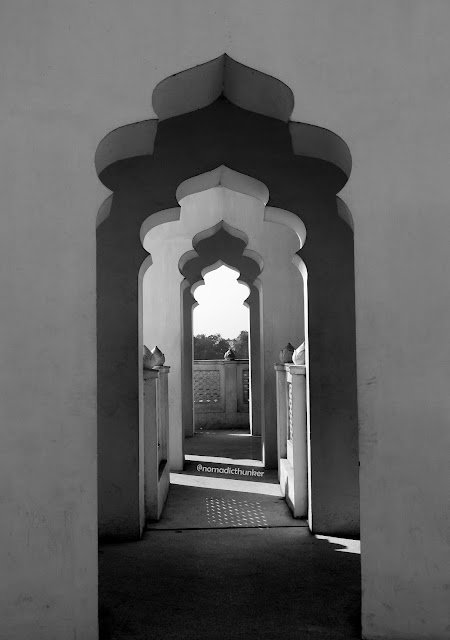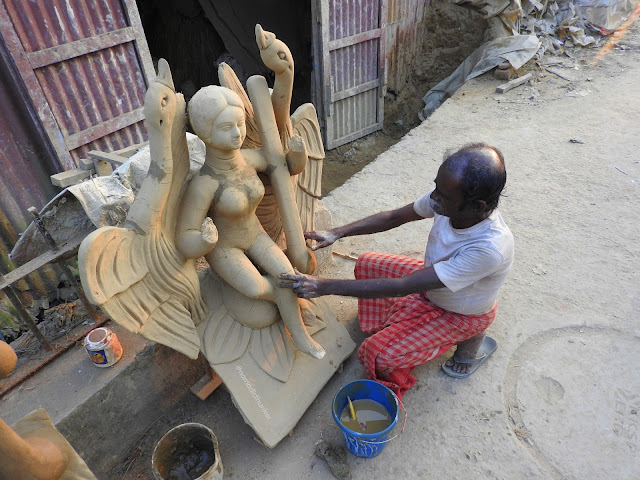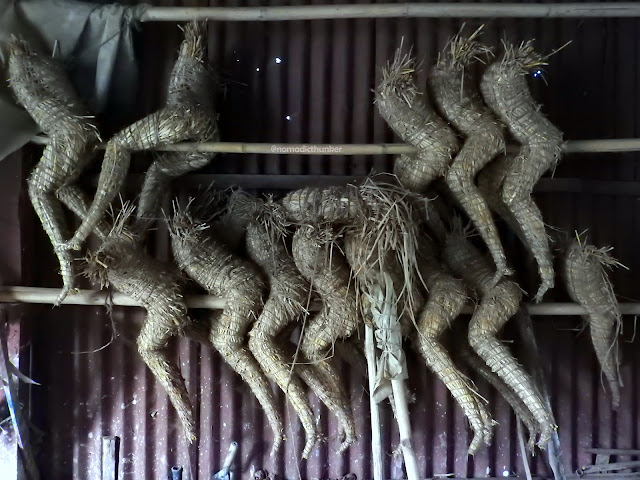If you want to know how ignorant you are, travel. Especially if you,
like me, do not have the patience to always sit through tomes.
Of course, I also recommend travel with this disclaimer: Leave your
misguided sense of entitlement behind before you commence your journey.
But only until the stubbornness to accomplish #29in29 kicked in
 |
| The rock sculptures at Unakoti |
Arriving in Kailashahar after flying into Agartala from Guwahati and then
taking a train to Kumarghat was just the beginning of both, shedding light as
well as dispelling that same ignorance! The pages of my northeast diary were
beginning in the geographic state of Tripura and in a mental state of euphoria.
I was going to learn by doing.
The good folks at ChaloHoppo were helping my friend and me to navigate
our way during our four days in the state. We would explore Agartala, the
capital of Tripura, after we had seen some of its interiors.
That got us to look up train tickets to Kumarghat (while making new friends at Agartala railway station)
That introduced us to Kailashahar or what seemed like life inside of a
slo-mo video, as I’d like to call it. And that’s how we were introduced to our
gregarious guide, Sujit and our demure driver, Arijit.
Kailashahar does not boast of too many hotels. Actually, it boasts of
only two.
And for reasons best known to the Universe (or the white bearded old
man in the sky, whichever of the two you believe in) ours was the one located
in close proximity to a blaring loudspeaker during our two night stay.
Were we going to pass the first test of our sense of entitlement?
Explorations from in and around Kailashahar:
Kailashahar is located at the Indo-Bangladesh border. Except that you
don’t really notice it – the border, that is. In fact, until Sujit pointed it
out to us, we hadn’t even realised that the barbed wires we had been driving
past were indicative of the Indo-Bangladesh border!
Unakoti
At 10 kilometres from Kailashahar are the Unakoti rock carvings - a
‘Shaivite' pilgrimage centre within Hinduism dating back to 7th – 9th centuries.
'Unakoti' means one less than a crore and that is believed to be the number of
rock cut carvings of Shiva as well as other gods and goddesses found there. These
carvings are only of faces and are believed to be the largest in size in India.
These carvings depict tribal features both in decoration and anatomy.
As per Hindu mythology, Lord Shiva was on his way to Kashi along with
one crore gods and goddesses when he made a night halt at this location. He'd
asked them to wake up before sun rise and proceed for Kashi. In the morning,
except Shiva, no one else woke up so he set out for Kashi himself cursing the
others to turn to stone. That's how there are one less than a crore stone
images and carvings at Unakoti.
Standing before these monolith structures, I reflected back to how a
couple of months ago I knew neither history nor myth about Unakoti!
 |
| Unakoti |
 |
| Unakoti |
 |
| Rock carving with Brahma-Vishnu-Mahesh |
Laxmi Narayan Mandir
There are quite a few temples in and around Kailashahar. And we
visited almost all of them – more at Sujit’s insistence than our own devotion.
Once inside a place of worship though, out of my innate curiosity, I’m drawn
towards the devotees’ religious fervour! Which is what I found in a striking
manner at the Laxmi Narayan Mandir. The temple is known for the tomaal tree
within its premises on which devotees tie strips of red linen as a symbol of
their invocations.
Elsewhere in the world, people clasp locks on to bridge while chucking
the key in the water-body below. Interesting how similar both these practices
seem in spite of the diversity in cultures!
 |
| The tomaal tree at Laxmi Narayan Mandir |
 |
| Laxmi Narayan Temple |
Manipuri food in Tripura
If experiencing Tamil Nadu’s Pongal celebration in Bihar’s Patna two
years ago had helped me experience India’s diversity in its full glory, then
licking off Manipuri delicacies from my plantain leaf plate at Sujit’s home was
an insight of its own kind. The Bishnupriyas are an ethnic group that belong to
Manipur who fled oppression sometime during the 18th and 19th
centuries and sought refuge in parts of Assam, Tripura as well as present day
Bangladesh.
Sometimes you encounter food through the cultures you learn about.
And sometimes you learn a lot more about culture and history through the food
you encounter!
 |
| Preparations for lunch underway |
 |
| The tiny human was most content getting us flowers as ingredients for salad were readied in the plate behind |
 |
| Authentic Manipuri thaali |
Jampui Hills and Vanghmun
On a less hazy day, this view of the Jampui Hills would have been
spectacular. But on the day I got there, I almost had to pinch myself
...Sometimes reality is more than what you imagined; albeit in a good way.
The Jampui Hills are along the Tripura-Mizoram border and are
inhabited by the Lushai as well as the Reang tribes. The Lushai follow
Christianity (you start seeing crucifixes along the road, just like in Goa) and
speak English quite fluently (we were asking for directions).
Incidentally, during the WWII, locals from the nearby Vaghmun village
rescued two American air-force pilots... (*things my history books didn't tell
me*)
I've had many more moments such as this one during my journey in the
northeast where I hadn't known about certain places, let alone knowing that I'd
ever be there.
But there I was
Exploring my country
Beyond what the newspapers were saying or my school syllabus had ever
done any justice to!
Neermahal
There are times on the road when you have to blink twice to
acknowledge that what you're looking at, ain't a mirage. Meet Neermahal (which
literally means ‘water palace’) on Rudrasagar located at the outskirts of
Agartala. It is the only other water palace in India besides the Jal Mahal in
Rajasthan.
Personally my highlight of the day was the journey -- hopping on to
public transport (which BTW, is quite comfortable) to get from Agaratala to the
palace. What made this 55 kilometre journey interesting was how everyone from
the hotel reception to the stranger on the street kept advising us against
public transport – not because of anything else, except that it was considered
too far of a distance to be undertaken by two girls by themselves unless they were hiring a private cab!
Of course, we had pennies to save and local experiences to lap up and savour – and we were glad we took the bus!
Of course, we had pennies to save and local experiences to lap up and savour – and we were glad we took the bus!
 |
| Neer Mahal | Agartala |
 |
| Neer Mahal | Agartala |
 |
| Neer Mahal | Agartala |
Streets of Agartala
It's not enough that I just see the recommended sights or live as
locally as possible when I travel. Sometimes my curiosity gets the better of my
otherwise reserved nature and pushes me to ask questions to strangers that I'm itching
to get answered.
That's what I did while walking through the streets of Agartala after
we returned from Neer Mahal. In the lead to Saraswati puja, the streets were
lined with artisans working away at their statues. While my camera helped make
an entry point to initiate a conversation, I, unfortunately, couldn't glean
much about the process of statue making because of the language barrier; though
I did get asked about the statue-making process in Mumbai!
 |
| Goddess Saraswati statues being work-in-progress |



